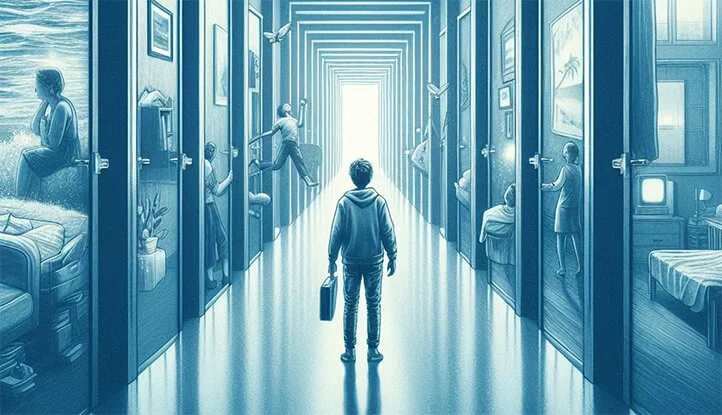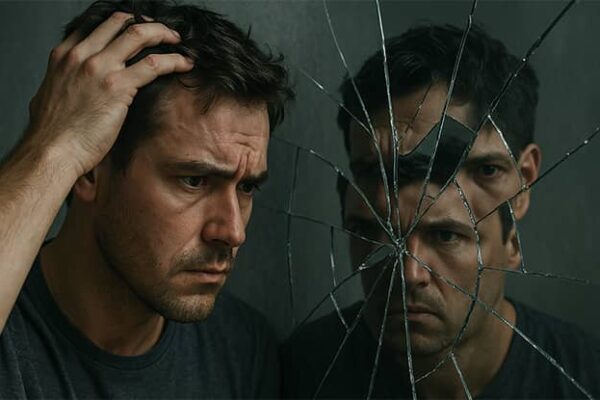Déjà vu is an inexplicable feeling of familiarity in an unfamiliar environment. Most of us have experienced the strange sensation at least once in our lives, as if we’ve already been in a particular situation, seen these places, or heard these conversations before. You’ve likely encountered something similar too. Researchers have been trying to understand the nature of this mysterious phenomenon for centuries.
The first mentions of déjà vu (from the French “déjà vu” — “already seen”) date back to 1876 when French scholar Émile Boirac described this state in scientific literature. Later, the term was popularized by French psychologist and philosopher Henri Bergson, who used it in his works, such as the book Matter and Memory (Matière et mémoire), published in 1896. According to various studies, about 70-80% of people worldwide have experienced déjà vu at least once in their lifetime, and it can happen at any age, starting from childhood.
In simple terms, déjà vu is the feeling that you’ve already lived through a current situation, even though that’s impossible. This sensation arises suddenly and lasts only a few seconds or minutes. Despite the illusion of familiarity, the person realizes that they have never been in this setting or situation before.
Déjà vu can be triggered by various factors: certain smells, sounds, images, or even conversations that seem vaguely familiar. It can also manifest in varying degrees, from a light sense of eeriness to a complete conviction that you’ve experienced the situation before.
Typically, déjà vu is considered a harmless phenomenon that poses no health threat. However, in rare cases, frequent episodes can cause anxiety or concern.

Possible Causes of Déjà Vu
Although déjà vu has been known to humanity for a long time, its nature remains one of the greatest mysteries for scientists. What causes our minds to perceive a completely new situation as something experienced before? Why does this feeling seem so real, even though logic tells us otherwise?
Researchers have put forward numerous hypotheses to explain this puzzling phenomenon. Some look for answers in brain function and neurobiological processes, while others turn to the intricacies of human psychology and perception. However, none of the existing theories can yet provide a comprehensive explanation for the phenomenon.
Neurobiological theories view déjà vu as the result of temporary glitches or disturbances in certain brain regions responsible for memory formation and recognizing familiar patterns. According to these hypotheses, the feeling of “already seen” arises due to brief delays in information processing, incorrect identification of new impressions, or a mismatch between different brain systems.
On the other hand, psychological approaches associate déjà vu with peculiarities of human perception, memory, and thought processes. The illusion of familiarity in a new situation could be the result of errors in these processes, false associations, or the influence of factors such as stress, fatigue, and divided attention.
Let’s look at the most common theories that explain the nature of déjà vu, ranging from neurobiological to psychological ones. Each sheds light on different facets of this fascinating phenomenon, but none can yet claim to be the definitive answer.
Neurobiological Theories
One of the most common groups of hypotheses explaining the nature of déjà vu is neurobiological theories. They search for the source of this mysterious phenomenon in the brain’s functioning, suggesting that temporary glitches or disturbances in certain areas may create the sensation of false recognition.
The key to unraveling déjà vu might lie in understanding how the brain forms, encodes, and recognizes memories. This complex process involves the work of many specialized neural structures, particularly the hippocampus, amygdala, and areas of the frontal and temporal cortex. According to neurobiological theories, temporary disruptions in their functioning lead to distortions in identifying new information.
Proponents of this approach point to the similarity between déjà vu and some symptoms of epilepsy and other neurological disorders. Patients with temporal lobe damage, occipital cortex injuries, and hippocampal impairments are indeed much more likely to experience episodes of déjà vu. This suggests that malfunctions in the corresponding brain areas might be the cause of this phenomenon.
Modern functional neuroimaging methods, such as fMRI and PET scans, allow scientists to directly study brain activity during déjà vu episodes. These studies indicate the involvement of a network of neural structures associated with memory, perception, and spatial orientation.
Below are the most popular neurobiological hypotheses attempting to explain the phenomenon from the perspective of brain function. Each emphasizes specific processes and structures, but a unified theory does not yet exist.
Delay in Brain Information Processing
One of the most widespread theories suggests that déjà vu is the result of a brief malfunction in the brain when processing new information. According to this hypothesis, for a moment, there is a delay between the visual perception of the situation and its conscious recognition. During this short interval, the brain perceives the new information as already familiar, even though it is actually new.
Proponents of this theory refer to the anatomy and functioning of the human visual system. Visual information from the eyes first reaches the occipital lobe of the brain and is then transmitted to the temporal lobe for further interpretation. The delay is believed to occur at this stage of data transmission.
Hippocampal Malfunction
The hippocampus is the brain region responsible for forming new memories, episodic memory, and spatial orientation. Some scientists link déjà vu to temporary glitches in the hippocampus, leading to errors in identifying new information.
Evidence supporting this hypothesis includes the fact that people with hippocampal damage experience déjà vu much more frequently. It is suggested that the hippocampus acts as a sort of “checkpoint” in the process of forming and solidifying new memories. Malfunctions in its functioning may cause the brain to perceive new events as already familiar and remembered.
Divided Attention Effect
According to this theory, déjà vu can occur when part of a person’s attention is distracted by other tasks, thoughts, or a scattered state. In such moments, the brain is not fully focused on the surrounding environment, making it seem vaguely familiar and not properly recorded in memory.
One explanation is that when attention is divided, the hippocampus receives insufficient information to form a complete memory of the event. As a result, the brain perceives new impressions as already familiar.
This hypothesis aligns with observations that déjà vu often occurs in routine, everyday conditions when a person’s attention may be scattered. Additionally, many people report that déjà vu frequently happens when they are deep in thought about something else.
Psychological Theories
In addition to the neurobiological approach, numerous psychological theories attempt to explain the nature of déjà vu from the perspective of human perception, memory, and thought processes. Proponents of these hypotheses see the source of the phenomenon not in the brain’s workings but in subtle processes that shape our interaction with the world around us.
Psychological theories are based on the idea that our minds constantly compare new information with already stored data in memory. Familiar elements of the environment activate related memory patterns, helping us navigate space and time. However, sometimes errors occur in this process, leading to the sensation of false recognition in a new situation — the phenomenon of déjà vu.
According to psychological theories, déjà vu may result from perception errors, incorrect associations, memory distortions, or even the peculiarities of human thought and imagination. These processes may also be influenced by factors such as stress, fatigue, emotional state, and divided attention.
A significant advantage of psychological approaches is their ability to explain a wider range of déjà vu types, which vary in degrees of familiarity and subjective experience, from a mild sense of recognition to a full conviction of having lived through the moment in the past or future.
Below are the most common psychological hypotheses regarding the occurrence of déjà vu. Each focuses on different aspects of human consciousness, attempting to recreate the mysterious chain of events that cause our minds to perceive the familiar in entirely new situations.
Perception and Memory Errors
Some psychologists believe that déjà vu is the result of errors and distortions in the processes of perception and memory. For example, a person may misinterpret a new situation as familiar due to its similarity to previous experiences or associations with already known images, sounds, or smells.
According to this theory, the brain constantly compares new information with existing memory data. Sometimes, mistakes occur in this process, leading to the false sensation of familiarity in unfamiliar settings.
Supporting this hypothesis, researchers note that people with more extensive life experiences and vivid imaginations are more prone to déjà vu. Their brains may find more potential connections and associations, creating the illusion of familiarity.
Similarity of Situations
Often, déjà vu occurs when a person finds themselves in an environment similar to one they have been in before. For instance, a new office may resemble a previous workplace due to a similar layout or design. Familiar elements in the environment create the illusion of recognizing the entire situation.
This phenomenon is explained by the brain’s tendency to perceive and encode information as patterns or generalized templates. When encountering a new but somewhat familiar environment, it may mistakenly activate related memory patterns, leading to a déjà vu experience.
One study showed that showing people pairs of landscape photos (scenery, buildings, etc.) significantly increased the frequency of déjà vu episodes compared to a control group that only saw unique images. Scientists attribute this to the fact that similar landscapes trigger familiar patterns in the brain.
The Influence of Stress and Anxiety
According to some studies, states of stress, fatigue, anxiety, or other emotional disturbances may provoke déjà vu episodes. During these times, the brain operates less efficiently, making more errors in processing information, increasing the likelihood of “recognizing” new situations incorrectly.
There is evidence that people with post-traumatic stress disorder, anxiety disorders, and some forms of depression experience déjà vu more often than healthy individuals. This is presumably related to memory processing disruptions in the amygdala, a brain region key to emotional reactions.
Moreover, chronic stress can lead to hyperactivity in the hippocampus and temporal lobes, which, according to some theories, are involved in the occurrence of déjà vu. Thus, certain forms of psychological stress may contribute to the development of this phenomenon.
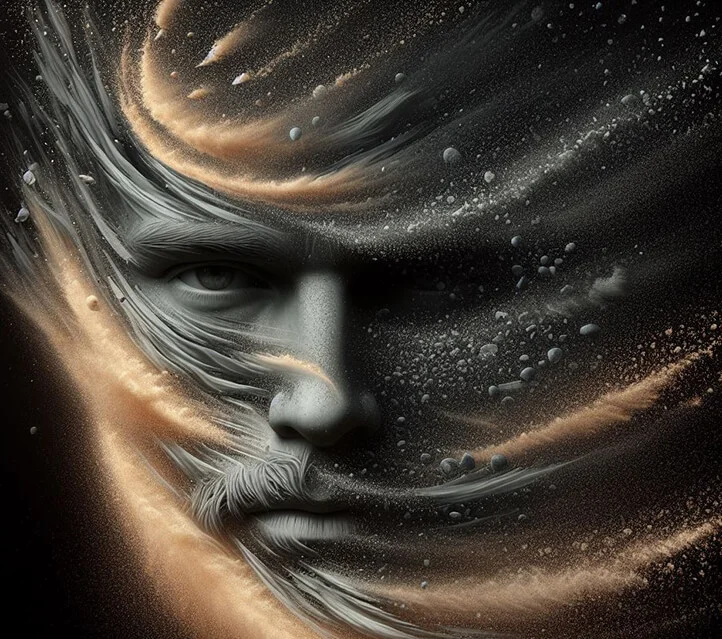
Types of Déjà Vu
Depending on the degree of “recognition” of the unfamiliar and the nature of the experience, scientists identify several main types of déjà vu:
- Banal déjà vu – a simple feeling that you’ve been in this situation before, seen or heard what’s happening. This is the most common and mild form of the phenomenon.
- Paradoxical déjà vu – a strong conviction that you have definitely been present during these events before, even though logically it’s impossible. There’s a feeling of a split between reality and perception.
- Time traveler – a type of paradoxical déjà vu, where a person experiences a complete certainty that they somehow traveled to the past or future and had already been in this situation in another time period.
- Déjà vécu (French for “already lived”) – an extremely rare form, in which the feeling of familiarity is accompanied by a loss of awareness of the present moment. The person feels that they have lived through the specific situation down to the finest details and knows what will happen next.
The latter two forms are the most problematic, as they are associated with severe disruptions in perception of reality and a sense of losing control over what is happening. In some cases, they may be symptoms of neurological disorders.

Déjà Vu in Culture
The phenomenon of déjà vu, this ghost of the familiar in the unfamiliar, has long attracted the attention of creative individuals. Writers, artists, musicians, and filmmakers have found in it an endless source of inspiration, delving into the mysteries of human consciousness and perception of reality.
Due to its unusual and enigmatic nature, the sensation of déjà vu has become a popular plot element in works of art. For many authors and directors, this phenomenon served as a metaphor for deep spiritual or existential questions, as well as a portal to parallel realities and possible alternate worlds.
In literature, classics and contemporaries often addressed the theme of déjà vu to immerse the reader in a state of eerie recognition or to make them question the authenticity of the surrounding world. From Vladimir Nabokov to Jonathan Safran Foer, many masterful writers have used this concept to create an atmosphere of surrealism and metaphysical curiosity.
Cinema also embraced the concept, making déjà vu one of the favorite elements of science fiction and psychological thrillers. The sensation of being caught in a time loop, or the mind traveling to the past or future, opened up limitless possibilities for directors’ imaginations and genre experiments.
Literature
In literature, examples of déjà vu can be found in the works of such authors as:
- Vladimir Nabokov, in his novel Ada or Ardor: A Family Chronicle, used déjà vu as a central theme connected with ideas of soul reincarnation.
- Jonathan Safran Foer, in his book Extremely Loud & Incredibly Close, describes déjà vu as an experience of the protagonist, who suffers from post-traumatic stress disorder.
- In James Joyce’s Ulysses, the scene with Bloom in the maternity ward demonstrates a classic example of paradoxical déjà vu.
- Leo Tolstoy, in his novella Father Sergius, uses the image of déjà vu to describe the spiritual enlightenment of the protagonist.
Cinema
In movies, plots built around the idea of déjà vu or time loops are quite common:
- Déjà Vu (2006) – a film in which Denzel Washington’s character uses experimental technology to observe past events in an attempt to prevent a terrorist attack.
- The Matrix (1999) – a cult sci-fi film where déjà vu serves as a sign of the hero’s realization of the illusory nature of the surrounding reality.
- Inception (2010) by Christopher Nolan plays with the idea of “planting” the feeling of déjà vu into a person’s mind through shared dreams.
- The Butterfly Effect (2004) explores the possible consequences of time travel and altering the past.
- Looper (2012) literally places the characters in a time loop that repeats itself over the span of one day.
Folklore and Mythology
In the mythology and folklore of many cultures, déjà vu was often interpreted as a sign of reincarnation or evidence of past lives. Some beliefs connected this phenomenon with the journeys of the soul, premonitions, or contacts with the afterlife.
- In Hinduism and Buddhism, the sensation of déjà vu is seen as a hint of events from past incarnations of the human soul.
- Native American cultures believed that déjà vu indicated the soul’s ability to travel through time and space.
- In Christianity, déjà vu was sometimes associated with the possibility of glimpsing the future through divine providence.
- In occultism and esoteric teachings, this phenomenon was explained by contact with parallel worlds or interference from supernatural forces.
Thus, despite its everyday nature, déjà vu is surrounded by numerous mystical interpretations across different cultural traditions.
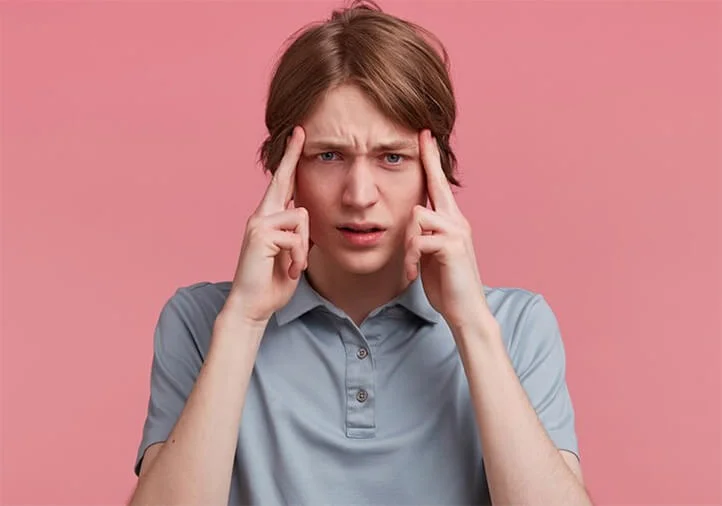
Déjà Vu and Health
Although in most cases, déjà vu is considered a harmless and brief phenomenon, some research points to its potential connection with certain disorders and health problems. The sensation of false recognition can be a symptom associated with a range of neurological and mental disorders.
Over the years, scientists have noted a strong correlation between frequent episodes of déjà vu and conditions such as epilepsy, migraine with aura, traumatic brain injuries, and some forms of dementia. A particularly strong link has been observed with epileptic foci in the temporal lobe of the brain and pathologies of the hippocampus—key structures involved in memory formation.
However, not only neurological disorders can provoke an increase in episodes of déjà vu. There is evidence that this phenomenon also occurs more frequently in people suffering from post-traumatic stress disorder, depression, bipolar disorder, and some forms of anxiety disorders.
The connection between mental health and déjà vu is of particular interest to researchers. On one hand, frequent and intense episodes of false recognition can cause anxiety, fears, and even panic attacks in some people. On the other hand, the presence of déjà vu as a symptom may help in diagnosing several mental and neurological pathologies.
Link to Epilepsy and Other Neurological Disorders
Scientists have long noticed a correlation between frequent déjà vu episodes and certain forms of epilepsy, particularly with epileptic foci in the temporal lobe of the brain. Patients with temporal epilepsy experience déjà vu significantly more often than healthy individuals.
Additionally, déjà vu can be one of the symptoms of other neurological disorders, such as:
- migraine with aura;
- traumatic brain injuries;
- multiple sclerosis;
- Alzheimer’s disease and other forms of dementia.
In these cases, the sensation of déjà vu is often accompanied by other impairments in memory, attention, and cognitive functions. However, the exact mechanisms connecting déjà vu with neurological diseases are still unclear.
It is believed that some of these conditions may affect the functioning of the hippocampus, temporal lobes, and other brain regions involved in memory and recognition processes. Disruptions in these brain systems may trigger more frequent episodes of déjà vu.
Possible Impact on Mental Health
While in most cases déjà vu is considered a harmless and short-lived phenomenon, under certain circumstances it can negatively affect a person’s mental state.
Frequent and intense episodes of déjà vu can provoke anxiety, worry, fears, and panic attacks. People may start to fear losing their mind or their connection with reality. In some cases, frequent déjà vu becomes one of the symptoms of mental disorders such as:
- depression;
- bipolar disorder;
- schizophrenia;
- post-traumatic stress disorder;
- anxiety disorders.
It should be noted that in such cases, déjà vu acts more as an accompanying symptom rather than the primary cause of a mental illness. Nevertheless, scientists are exploring the possibility of using the phenomenon of déjà vu as one of the indicators in the diagnosis of certain disorders.
If déjà vu episodes start to seriously concern a person, provoking intense anxiety or fears, it is important to consult a doctor to identify potential health problems and receive necessary help.
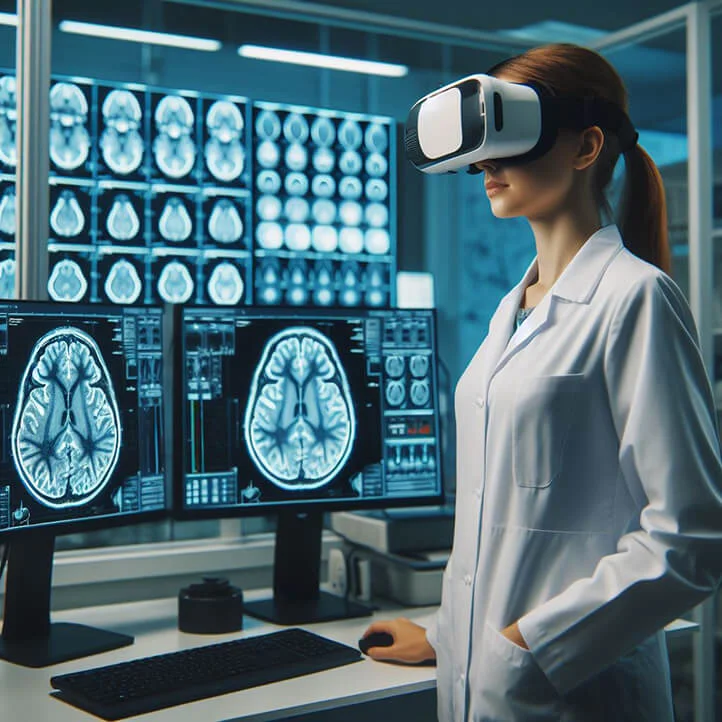
Research on the Déjà Vu Phenomenon
For more than a century, scientists have been trying to unravel the mystery of the déjà vu phenomenon. This illusion of familiarity in a completely new situation seems to challenge the very foundations of human perception of reality. It is not surprising that the study of déjà vu has become one of the most intriguing areas of cognitive research.
Early attempts at scientific analysis of the phenomenon were limited by a lack of appropriate methods and technologies. Scientists could only rely on subjective reports from people who had experienced déjà vu. However, with the development of modern brain imaging techniques and experimental methods, the situation has radically changed.
Today’s researchers have powerful tools to explore the deepest corners of the human mind. Functional magnetic resonance imaging (fMRI) and positron emission tomography (PET) allow scientists to track the activity of various brain regions at the moment of déjà vu. Additionally, virtual reality technologies enable researchers to recreate conditions that trigger the phenomenon in a controlled laboratory environment.
With each passing year, scientists are gathering more data on the neurobiological processes and cognitive mechanisms underlying déjà vu. However, despite tremendous progress, a definitive explanation of this mystery remains elusive. The phenomenon continues to raise new questions about the nature of human memory, perception, and consciousness.
Modern Methods of Studying Déjà Vu
Modern methods of functional neuroimaging, such as fMRI and PET, have opened unprecedented opportunities to study brain activity in real time. These technologies allow scientists to directly observe the functioning of various neural structures and networks during déjà vu experiences. Visualizing the distribution of brain activity at this moment provides important clues about the mechanisms and brain regions involved.
In addition, advances in virtual reality and computer modeling have opened new horizons for experimental recreation of conditions that provoke déjà vu. Using these technologies, researchers can create virtual scenarios that trigger this strange sensation in a controlled laboratory environment and study the behavior of participants in detail.
Alongside neuroimaging and virtual reality, modern scientists have access to a wide range of psychological tests and methods for assessing cognitive functions such as memory, attention, and spatial perception. These tools help identify connections between individual cognitive processes and susceptibility to déjà vu.
Neuroimaging
Functional neuroimaging methods, such as positron emission tomography (PET) and functional magnetic resonance imaging (fMRI), allow scientists to observe the activity of various brain regions during déjà vu. These technologies have provided important clues about the possible roles of the hippocampus, temporal lobes, and other structures in the development of the phenomenon.
One study using fMRI showed that during déjà vu, areas of the brain related to memory, spatial perception, and decision-making are activated. Researchers believe that déjà vu arises due to a temporary conflict or inconsistency between these systems.
Virtual Reality
New virtual reality technologies offer scientists a unique opportunity to model situations that provoke déjà vu in controlled laboratory conditions. This allows for more detailed research into the factors influencing the phenomenon’s occurrence and analysis of participants’ reactions.
In one experiment using virtual reality, people placed in a familiar yet slightly altered virtual space experienced déjà vu more often than in a completely new setting. Researchers were able to observe brain activity during these episodes and identify certain patterns of neural activity.
Psychological Tests and Memory Research
In addition to neurobiological methods, scientists use various psychological tests and experiments to study the roles of memory, attention, and perception in the occurrence of déjà vu.
For example, assessments of participants’ short-term and long-term memory showed that individuals with weaker short-term memory were more likely to experience déjà vu. This is consistent with theories about delays in processing new information.
Other studies point to a connection between the level of attention scatter and the frequency of déjà vu episodes. The more prone participants were to distraction, the greater the likelihood of experiencing the phenomenon.
Prospects for Further Research
Despite numerous experimental data, the phenomenon of déjà vu remains a mystery for scientists. To date, there is no single comprehensive theory that can fully explain its nature. Specialists continue to seek answers to the following questions:
- Which neurobiological processes and brain structures are specifically involved in the occurrence of déjà vu?
- Why are some people more prone to this phenomenon than others? What role do genetics and environmental factors play?
- Is it possible to learn to control or consciously suppress episodes of déjà vu?
- Is there a connection between déjà vu and other cognitive phenomena such as derealization, depersonalization, or false memory syndrome?
- How does the phenomenon of déjà vu relate to the processes of memory formation and recognition as a whole?
New high-resolution neuroimaging methods, more advanced virtual reality technologies, and experimental modeling will provide researchers with new tools for the detailed study of this mysterious phenomenon. Moreover, an interdisciplinary approach, combining advances in neuroscience, psychology, philosophy, and other fields, may shed light on the fundamental mechanisms underlying the déjà vu phenomenon.
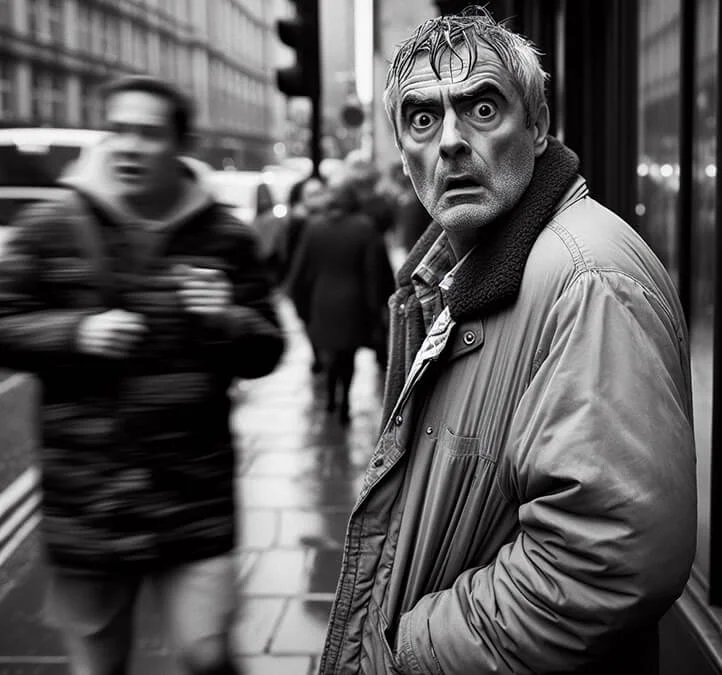
Conclusion
Déjà vu is an intriguing phenomenon shrouded in mystery and mysticism, yet familiar to most of us. For centuries, it has captured the attention of scientists, philosophers, and artists who have sought to unravel its enigma.
Modern researchers propose numerous hypotheses linking déjà vu to neurobiological causes, such as delays in information processing by the brain, dysfunctions in the hippocampus, or the effects of attentional scatter. At the same time, psychologists trace the roots of the phenomenon to processes of perception, memory, and errors in their functioning.
Perhaps the experiences of déjà vu are tied to deeper phenomena related to the very nature of human consciousness and perception of reality. The latest research methods, such as functional neuroimaging and virtual reality, help scientists delve into these mysteries.
Although déjà vu is generally considered a benign phenomenon, some studies suggest a potential connection to epilepsy, traumatic brain injuries, and other neurological disorders. In certain situations, frequent episodes of déjà vu can negatively impact an individual’s mental health, leading to anxiety, fears, and panic attacks.
The mysteries of déjà vu await their resolution. The study of this phenomenon may not only illuminate the mechanisms of memory and perception but also provide insights into the nature of the human self. For now, this experience remains one of those remarkable phenomena that remind us that our mind is truly a bottomless treasure trove of wonders and mysteries, poised to yield many more astonishing discoveries.
